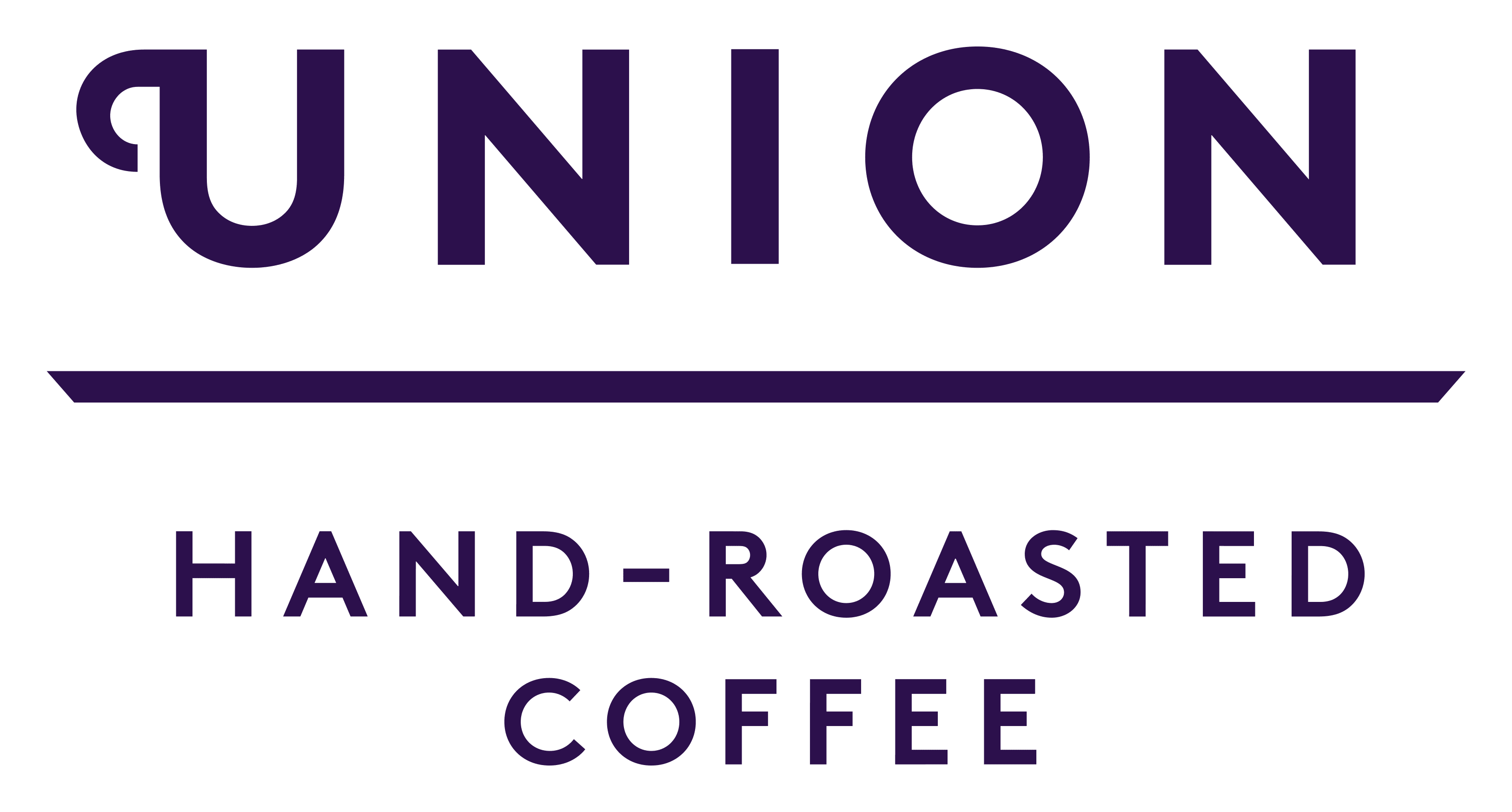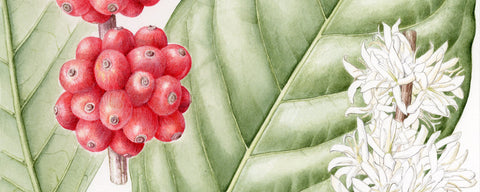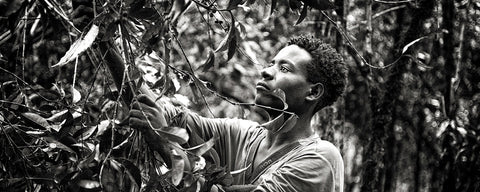In March I published a blog article on the complexity and issues around the cost of coffee production and my experiences from speaking to coffee farmers. Unsurprisingly I received lots of comments from people around the world equally passionate about the subject. I wanted to use this second blog post as a chance to follow up on your comments…
When Kim, Chad and I had a pre-webinar conversation on the topic we were discussing the complexity and Chad summed it up in two words ‘paralysing nuances’. He is so right, I thought. The nuances are paralysing and it is one of the reasons I have been so reluctant to write about Union Direct Trade, and more specifically Cost of Production. But, I did write about it and it did fuel some discussion.
I do want to take the time to comment on some of the comments received on the first post.
This time I grabbed a cup of coffee and started reading the piece of work suggested by Antonie (one of the commenter’s on my first post). He suggested I should read ‘The Use of Knowledge in Society’ and ‘The Pretense of Knowledge’, by Friedrich Hayek.
A quote from ‘The use of knowledge in society’
‘In the study of such complex phenomena as the market, which depend on the actions of many individuals, all the circumstances which will determine the outcome of a process, for reasons which I shall explain later, will hardly ever be fully known or measurable’
This is true, but does it then mean we shouldn’t attempt to understand? During my work for World Coffee Research I designed a survey, specifically for a cooperative in Guatemala. I realised that designing one survey that could be implemented in all coffee producing countries, with all types of producers would be too ambitious and maybe even an impossible task. Questions would be so basic, that it would be questionable how useful the information collected could be.
On the other hand, the industry doesn’t know basic facts and figures: How many coffee producers are there in the world, how many of them are small, medium or big? What do we define as a small, medium or big? More than 5 hectares, is medium sized landholding in Guatemala but small landholding in a country like Colombia or Brazil. How many coffee producers sell cherries? How many processes up to parchment (wet or dry); and how many go through all steps and sell the green bean? At Union Coffee we know this information for the producers we source from, however, to my knowledge, world figures and statistics are non-existent.
So, I do believe that an economic or statistical approach could provide useful insights to the industry. Nevertheless, such an exercise would involve industry wide commitment, probably on a country self-reporting basis as it would be very challenging and ambitious for one organization to try and collect this data. Local knowledge is important, and there is a lot of local knowledge available.
The use of knowledge in society is Hayek’s response to the work of his socialist colleague Oskar Lange who was in favour of a planned economy. To clarify, my first blog isn’t an attempt or a campaign for a centralised pricing system. I am trying to convince the reader that we should accept that there is great diversity amongst coffee producers and cost of production, as a result a universal CoP doesn’t’ exist. A buyer can never pretend to have the knowledge of a fair price he needs to consult his producer, the exporters and others in the chain. If we want the coffee sector to be sustainable (which roughly translates into: we want coffee farmers to keep farming quality coffee preferably in harmony with nature because they can earn a decent livelihood from it) green coffee buyers need to get involved and engage in conversations with the producers, they source from. Don’t start the conversation on price with ‘Today, the New-York C is at USD 1.30,-/lb’ but ask ‘What do you think is a fair price for your coffee?’ and ‘Why do you think this price would be fair?’.
How are my numbers? – Dethlev Cordts asks
Not mentioning numbers was done on purpose, because I didn’t want anyone to take the number out of context and start spreading the word this is what it costs to produce coffee. As I mentioned in the webinar, we did intensive research to CoP in Guatemala in 2011. Here are the numbers:
The lowest out of the all the interviews was GTQ350 and the highest GTQ5863.
So, what did we learn form that, some farmers might be not willing to tell the truth because of distrust, others simply don’t know and yield plays an important role as Alejandro also pointed out in the comments. I took the numbers back to the producers and we discussed them and agreed that the ‘true cost’ would lie somewhere between 800 and 1000 Quetzales for a quintal of parchment. Still a very broad range. The cooperative management calculated their costs and we agreed on a price for the coffee on the basis of these numbers.
In 2011, the minimum wage was GTQ63.70 per day, today it is GTQ81.87. We asked farmers how many days they spend working on each activity and valued those days at the minimum wage, not the local wage paid which in many cases was below the minimum wage. This is because we demand from our coffee farmers that they pay at least the legal minimum wage, but preferably a living wage. Yet, if we demand this we need to pay a price that allows farmers to do so.
We also discussed that we cannot subsidise inefficiency, farmers could work on their profitability by increasing their yield and lowering their CoP per unit. During that time leaf-rust hit Latin America very hard and in 2013 it also started to reach the remote high altitude mountains of Huehuetenango. The cooperative came back with a proposal where they had worked out the cost of leaf rust prevention per manzana (local land unit, 0.7 ha.) and quintal (100 lb). We reviewed the pricing for these coffee’s so that the producers could invest in the inputs needed to combat leaf rust. The leaf rust emergency plan worked and production slightly declined but not as much as in neighbouring communities. It did effect the parchment/green rate significantly increasing the cost for the cooperative, because they had more weight loss from damaged beans than expected. So, we do work with producers on methods to better understand CoP.
This is just one case; a story I like to tell because it illustrates how CoP varies from year to year. Minimum wages rise and coffee producers need to change their traditional ways of farming to deal with climate change and its effects on yield and the occurrence of pest and disease.
In other countries we source from, producers are clear on their CoP and negotiations are more straightforward. Union Direct Trade allows us to assess each individual case. Origin and quality are factors that also influence the price we can pay for a coffee. Union Direct Trade aims to set a price according to a cost structure that guarantees quality, continued improvement and a decent living for the farmer and his/her farmworkers.
The importance of yield, – Alejandro Martinez
Alejandro makes a very important contribution to the discussion. ‘I have seen so many farmers that depend on C price just cashing out and selling their farms. Some just abandon their farms altogether or switch crops entirely’ As Alejandro points out, with a fair price, there remains one uncertain variable: yield. Theoretically, in long term relationships with fair prices farmers should be able to stabilise their yields with a manageable amount of fluctuation. A catastrophe, climate change, El Niño, leaf rust, the need for renovation can cause yields to decrease significantly. So, the reality might be more challenging. This is why long term relationships, and pre-harvest negotiations are so important. It is also why in my experience farmers appreciate a fixed price, irrespectively of what the Word Market does.
I will post some work on what Union does at origin in the future
The limited impact of speciality coffee on the whole coffee sector? Amanda Powers
Amanda observes that most 80-83 quality graded coffees in the world, are not eligible for premiums. At Union we only source 84+ coffees. These coffees are hard to find, and represent a tiny share of the total amount of coffee produced. Not all coffee producers are able to produce coffees of this quality. Our impact is therefore limited to those who can. Yet, the benefits of our model for those we source from is big. I meet happy producers, who take pride in what they do. Producers who can send their children to school, improve their houses and try to make their coffee better year after year. As a consumer there are so many things you can do making the world a little better, drinking good coffee and knowing the farmer has been rewarded for this coffee is one of these things. I believe speciality coffee, paves the way and can set examples the whole industry can learn from. In some regions, I observed that once the area was discovered as a high quality producing region, and buyers started to pay premiums the traditional buyers needed to raise the prices they offered for coffees from these regions too. There are certainly positive spill-over effects.
But, I agree there lies a tremendous task ahead of us!


